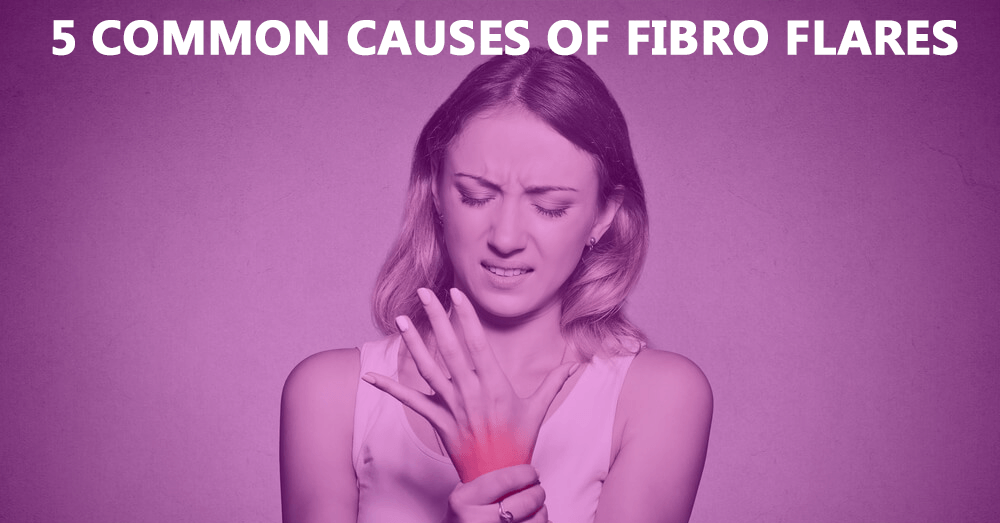For most people, a new morning brings energy enough to hit the ground running if need be. That is, most people who do not suffer from fibromyalgia. Those suffering from fibro, however, can barely tiptoe through the morning, nonetheless, run through it.
Some days the mere pressure of putting your feet to the floor is excruciating. Your feet are numb and tingly, your legs stiff, knees throbbing, and it takes extreme effort just to walk from the bedroom to the kitchen.
A restless night often leaves you feeling as if you’ve run a marathon. You sleep with pillows under your feet, between your ankles and knees and make sure your legs touch each other as little as possible.
Does this scenario sound familiar? This condition of numbness and tingling is called paresthesia and is seen in around one in four people with fibro.
What Causes Paresthesia? Why is Numbness Common in Fibromyalgia?
There are a few theories as to what causes numbness and tingling for those suffering from fibromyalgia. So why do so many of us with fibromyalgia frequently experience numbness and tingling in our hands, feet, legs, or other body parts?
There is no definite answer for that. But there are a number of possible reasons:
- Muscle spasms and muscle stiffness. Muscles that are tense or spasming may put pressure on the nerves, resulting in numbness, tingling, or even feeling like something is crawling on you.
- Cold-induced vasospasm. Also referred to as Raynaud’s disease or syndrome. This is when cold or stress leads to a spasm in an artery, usually in your hands or feet, causing your blood vessels to narrow, limiting your blood supply. This leads to the area feeling cold, tingly, numb, and change colors. One study suggests that people with fibromyalgia are more likely to have cold-induced vasospasm than their healthy counterparts.
- Vitamin deficiency. A deficiency in vitamins B-1, B-3, B-6, B-12, or E can cause neuropathy due to nerve damage.
- Excess of vitamin D. Having too much vitamin D in your system may also cause neuropathy.
- Magnesium deficiency. Magnesium is a vital mineral for our bodies to function. Not having enough leads to increased muscle spasms, which may in turn cause pressure on the nerves causing numbness.
If fibromyalgia numbness and tingling is not something you commonly experience with your fibromyalgia flare-ups but is a new symptom, it’s important to see a doctor, because it could be a symptom of other conditions such as multiple sclerosis, hypoglycemia or peripheral neuropathy in diabetes.

Click Here to Visit the Store and find Much More….
Coping Techniques for Muscle Spasms
Effective exercise involves increasing cardiovascular (aerobic) fitness as well as stretching and mobilizing tight sore muscles. Low or non-impact aerobic exercises such as brisk walking, biking, swimming or water aerobics are generally the best way to start an exercise routine to minimize pain.
Physical therapy may be helpful and could include some of the coping techniques previously mentioned such as: heat and ice massage, whirlpool, ultrasound and electrical stimulation to help control pain. Some facilities also offer aquatic therapy as an alternative to traditional exercise for those who need a gentler way of working out.
- Heat: Heat is best utilized for reducing the pain that results from muscle tension and inactivity. The warmth increases blood flow and thereby produces some relaxation, reducing pain and stiffness. Heat methods include: heating pads, hot packs, soaking in warm baths, or lying on an electric mattress pad.
- Cold: Cold treatments decrease inflammation by reducing blood flow to an area. They also may numb the areas that are sending pain signals. You might use gel packs, ice packs or bags of frozen vegetables. With both heat and cold, you should not use the treatment for more than 15 or 20 minutes at a time.
- Massage: Massage of painful areas can also provide temporary relief from pain. Like heat, massage increases blood flow and can also relieve spasms. If you use a massage therapist, ask them to be cautious and to check frequently on your pain sensitivity.
Another Possible Cause of Fibromyalgia Numbness
Another often overlooked possibility for numbness, tingling, pain and spasms, is vitamin deficiencies.
- Low B-12 level. Common symptoms of low vitamin B-12 levels include fatigue, numbness and tingling and a weakened immune system. Helpful supplements include B-12 lozenges, sublingual B-12 (dissolved under the tongue) and B-12 injections.
- Low serotonin. Serotonin is an important hormone and neurotransmitter manufactured from the amino acid, tryptophan. Symptoms from low serotonin include depression, fatigue, increased pain and low blood sugar.
- Magnesium deficiency. This interferes with how the muscles relax and make energy and the body’s ability to convert 5-HTP into serotonin. Increased fatigue, spasms (and subsequently numbness and tingling due to the pressure on the nerves) and pain, especially after activity, are all signs of low magnesium in a person with fibromyalgia.
Starla’s personal experience with both magnesium and 5-HTP is that within a week of starting the supplements, I noticed a significant reduction in pain, numbness and tingling and also was able to maintain a deeper and more refreshing sleep without frequent disturbances from pain and discomfort.
Another source of magnesium absorption is Epsom salt baths. Bathing with Epsom salts and baking soda can bring relief to the fibromyalgia sufferer.
Final Thoughts
As you can see, there are many methods for combating the pain, numbness and tingling that are frequent occurrences for those dealing with fibromyalgia. There are little things you can also do every day to make life more comfortable and daily activities more doable. Below is a list of practical and helpful suggestions from fellow fibro sufferers:
- Wear comfortable shoes with padding and support.
- Purchase rubber mats for those areas where you stand any length of time like your stove, or bathroom sink.
- Invest in a foot bath for soaking your feet.
- Don’t use leg and foot pain as an excuse not to exercise.
Do what you can and keep the parts of your body that aren’t hurting as much moving! Stay active in the ways you can. Push through to a healthier you and do what you can do. Be kind and forgiving of your self along the way.
Resources
Healthline (Fibromyalgia and Other Common Causes of Numbness in the Legs and Feet)
University of Washington Orthopaedics and Sports Medicine (Fibromyalgia)
CFIDS & Fibromyalgia (Strategies for Pain)
MD Junction (Numbness and Tingling in Fibromyalgia Syndrome)
Fibromyalgia Syndrome (Numbness and Tingling in Fibromyalgia Syndrome)
Live Strong (Fibromyalgia Baths With Epsom Salt & Baking Powder)
Pro Health (Fibromyalgia Nutrition Basics: Common Deficiencies, Symptoms, and Supplement Strategies)
[mailpoet_form id=”2″]

